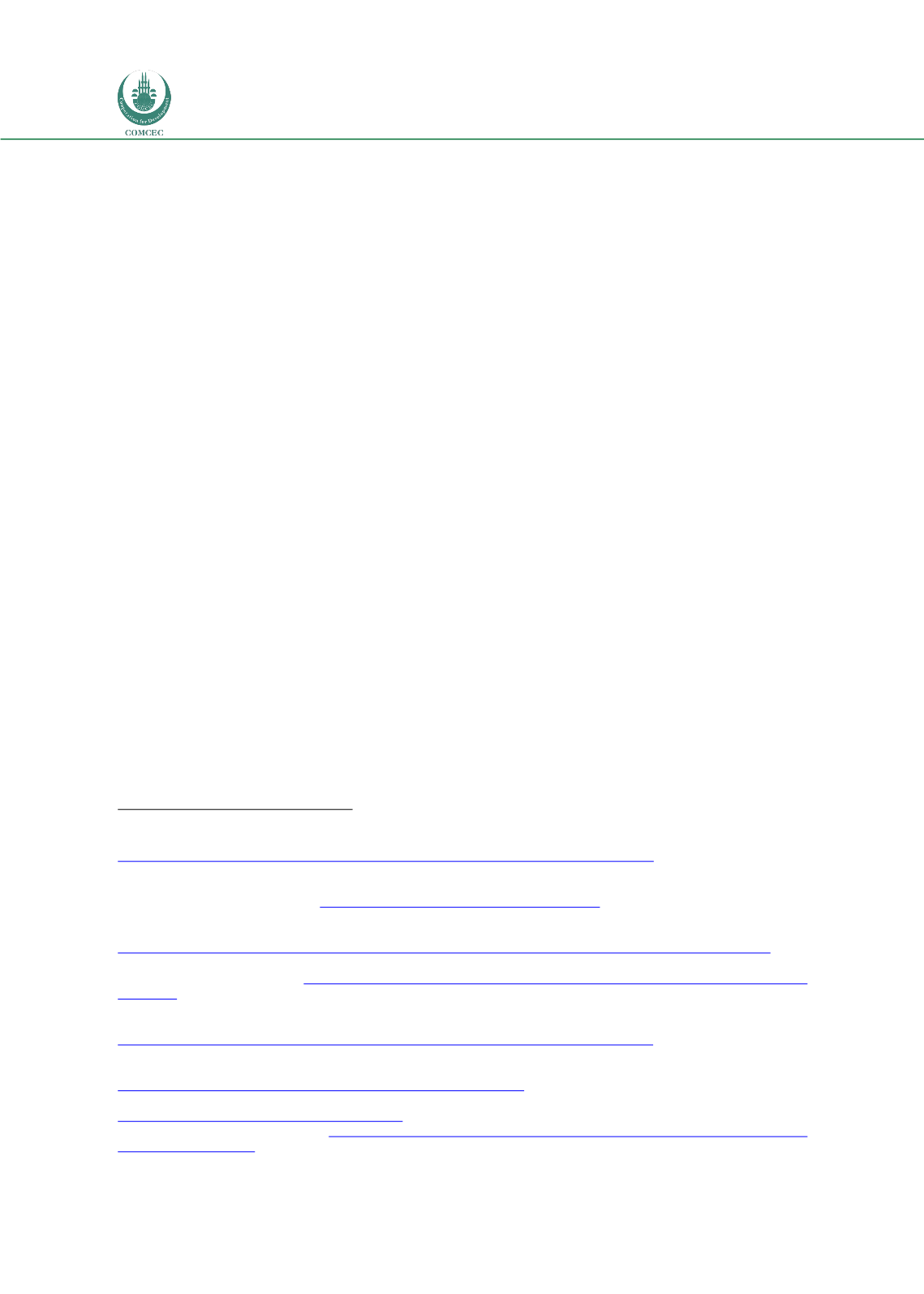

Forced Migration in the OIC Member Countries:
Policy Framework Adopted by Host Countries
54
that Uighurs in Kyrgyzstan were targeted by ethnic Kyrgyz mobs in the midst of political
upheaval in 2010 and were threatened during the Kyrgyz-Uzbek conflict.
216
This has pushed
Uighurs to look further outside the region – with Turkey and Saudi Arabia serving as main
countries of asylum, while the United States, Canada, Australia, Germany, Scandinavian
countries, and Thailand have also reported arrivals of Uyghurs.
217
2.6.2.
Protection frameworks in Central Asia
Most countries in Central Asia have ratified the 1951 Convention and many have created
national asylum systems, though there are concerns that these systems do not always follow
basic humanitarian protection principles such as nonrefoulement in practice. The ability to
find durable solutions also remains hindered by a “return bias” favoring repatriation over
other options such as local integration or circular labor migration frameworks despite
ongoing difficulties in refugees’ countries of origin, namely Afghanistan.
A lack of adherence to the 1951 Convention principles
All Central Asian countries except Pakistan and Uzbekistan have ratified the 1951 Convention;
but incorporating the Convention into national law and practice remains problematic in most
countries. Iran, Kazakhstan, Kyrgyzstan, Tajikistan, and Turkmenistan have all implemented
national asylum legislation, but observers have cast doubt on the quality of these policies with
the possibility of refoulement remaining a concern.
218
In Tajikistan, for example, the system
for processing asylum claims remains unclear, judicial procedures do not comply with
international standards, and asylum seekers are deported without due process if they did not
hold a visa before entering the country.
219
In Iran, refugees are allowed access to medical and
social services, but UNHCR does not have information regarding how refugee status
determinations are made and there are reports that many refugees live in the shadows
without legal residence or access to basic rights.
220
The Almaty Process: Upgrading and reinforcing national asylum systems
Regional cooperation on migration issues in Central Asia is limited, and there is no legally-
binding regional framework to govern migration or humanitarian protection. Recently, the
216
Research Directorate, Immigration and Refugee Board of Canada, “Kyrgyzstan: The Uyghur minority, including how they
are treated by society and the authorities; government protection provided,” updated April 4, 2012,
https://www.justice.gov/sites/default/files/eoir/legacy/2013/11/07/KGZ104071.FE.pdf pg. 2 ;Immigration and Refugee
Board of Canada, “Kyrgyzstan: Treatment of the Uyghur [Uighur] minority by society and authorities, including state
protection provided to victims of violence and discrimination; Uyghur minority political groups, including activities (2012-
2015),” updated February 12, 2015
, http://www.refworld.org/docid/560b96564.html .217
Valentine Guerif, “Making States, Displacing Peoples: A Comparative Perspective of Xinjiang and Tibet in the People’s
Republic of China” (working paper no. 61, Refugee Studies Centre, Oxford University, May 2010), 10,
http://www.rsc.ox.ac.uk/files/publications/working-paper-series/wp61-making-states-displacing-peoples-2010.pdf ;Edward Wong and Poypiti Amatatham, “Ignoring Protests, Thailand Deports About 100 Uighurs Back to China,”
The New
York Times
, July 9, 2015,
http://www.nytimes.com/2015/07/10/world/asia/thailand-deports-uighur-migrants-to- china.html218
Orchard, “The Almaty Process: Improving Compliance with International Refugee law in Central Asia,” 69
219
U.S. Department of State, “Country Reports on Human Rights Practices for 2015: Tajikistan,” accessed June 1, 2016,
http://www.state.gov/j/drl/rls/hrrpt/humanrightsreport/index.htm?year=2015&dlid=252977 .220
Refugees are also officially banned from participating in political or union activities in Iran.
Regulations relating to
Refugees 1963
, Iranian Council of Ministers, December 16, 1963
http://www.refworld.org/publisher,NATLEGBOD,,IRN,3f4a23767,0.html ;United States Committee for Refugees and
Immigrants,
World Refugee Survey 2009 – Iran
, (Arlington, VA: United States Committee for Refugees and Immigrants, 2009)
http://www.refworld.org/docid/4a40d2a84a.html ;Patrick Strickland, “Why are Afghan refugees leaving Iran?,”
Al-Jazeera,
updated
May
17,
2016,
http://www.aljazeera.com/indepth/features/2016/05/afghan-refugees-leaving-iran- 160511103759873.html .















